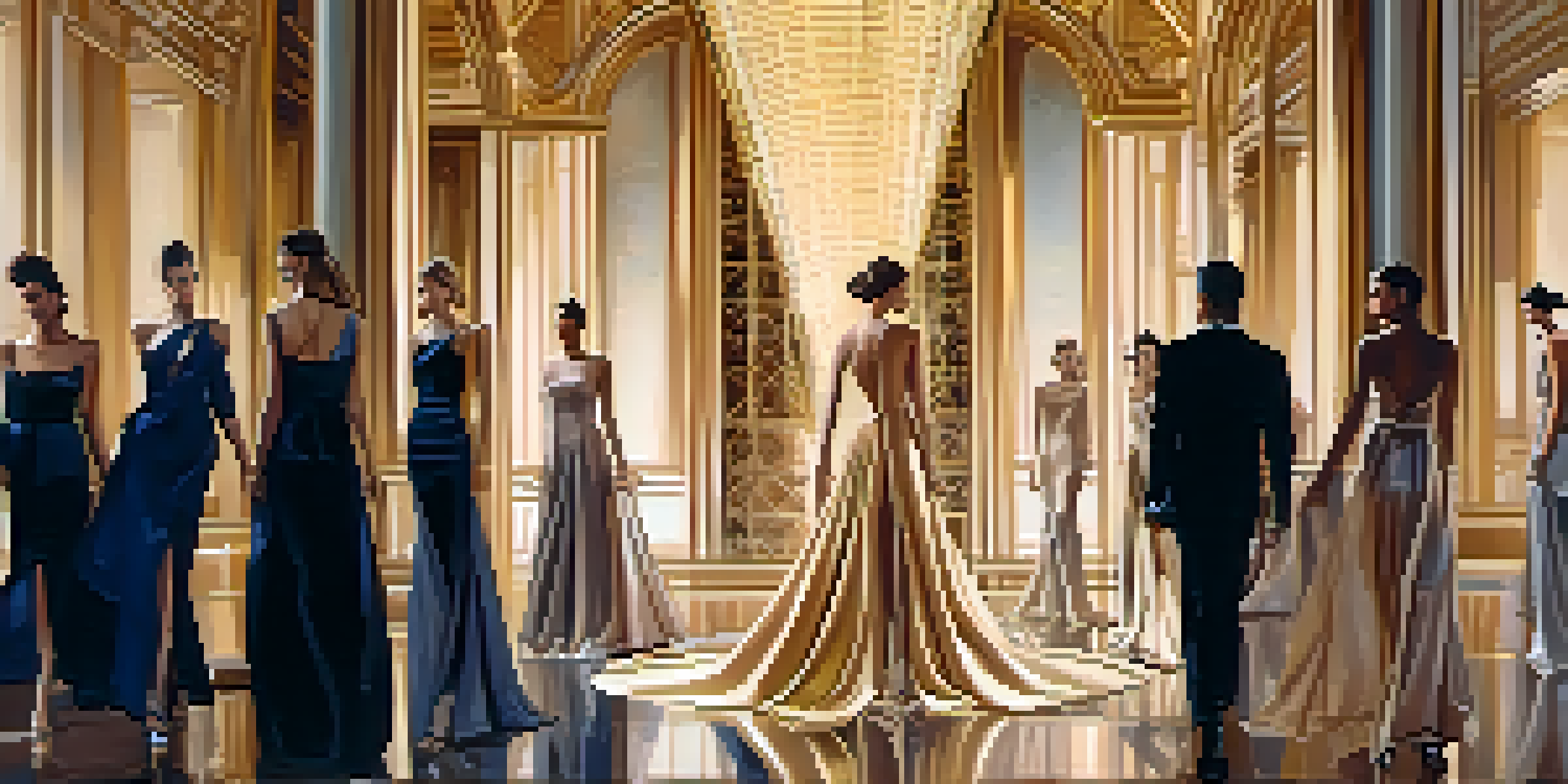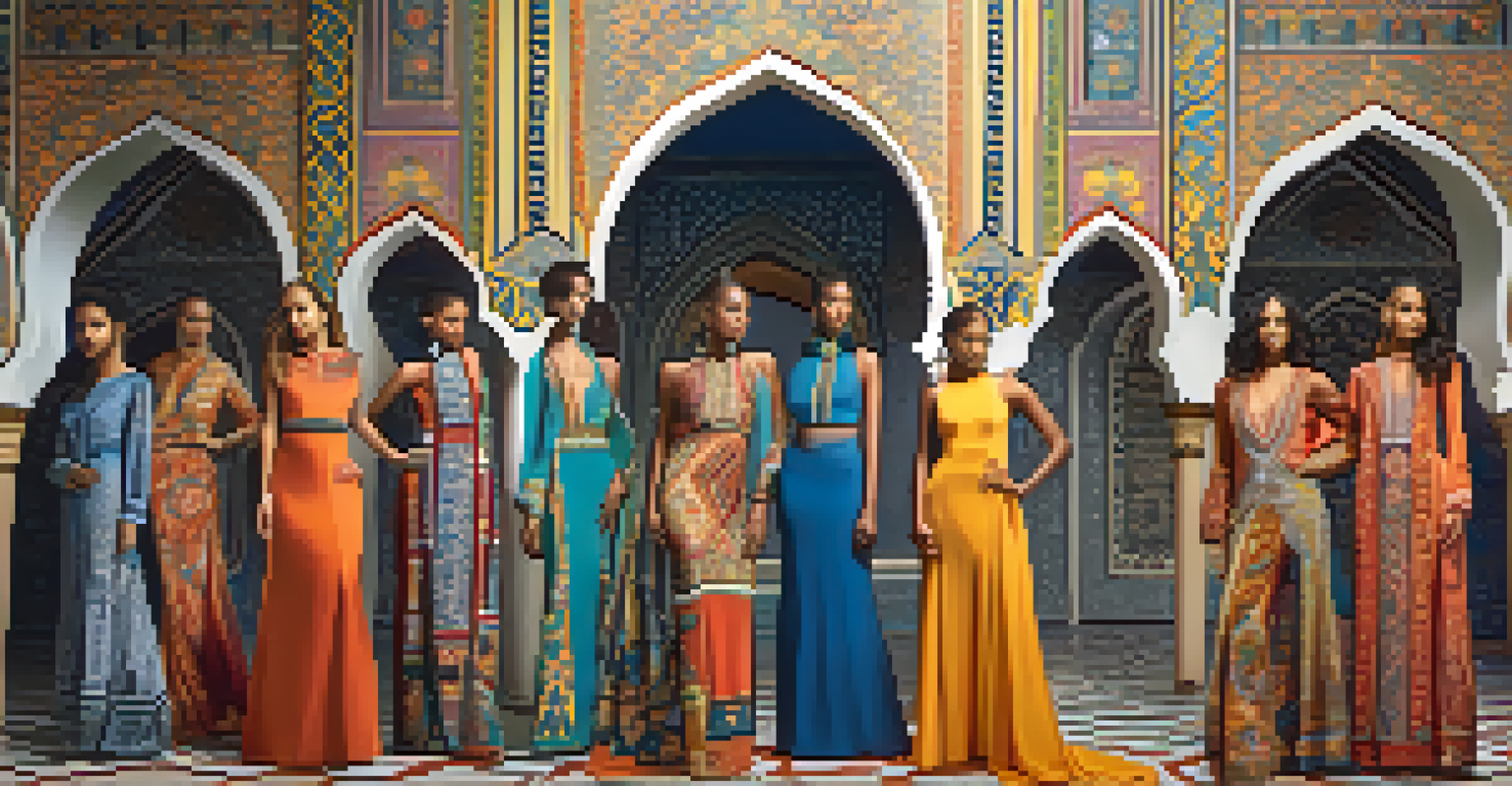Iconic Buildings and Their Influence on Fashion Designers’ Works

The Relationship Between Architecture and Fashion Design
Architecture and fashion are two creative fields that often intersect, influencing each other in profound ways. Just as buildings are designed to evoke emotion and convey identity, fashion does the same through clothing. This intricate relationship highlights how visual aesthetics in architecture can inspire designers to create garments that resonate with a similar spirit.
Fashion is architecture: it is a matter of proportions.
For instance, the clean lines and modern feel of the Bauhaus movement have inspired countless fashion collections, where simplicity and functionality take center stage. In this way, designers draw from architectural principles to craft pieces that embody the essence of the structures they admire. This interplay not only enriches fashion but also showcases the shared artistic language between these two disciplines.
Ultimately, recognizing the connection between architecture and fashion allows us to appreciate how both forms of art reflect cultural values and trends, creating a dialogue that transcends time and space.
Iconic Buildings That Have Shaped Fashion Trends
Some buildings have become symbols that inspire fashion designers worldwide. Take the Eiffel Tower, for example; its unique iron lattice design has influenced everything from patterns to silhouettes in numerous collections. Designers have often used the idea of verticality and elegance that the structure represents to create stunning evening wear that mirrors its iconic stature.

Another prime example is the Guggenheim Museum in New York, known for its spiraling form. This architectural marvel has inspired avant-garde fashion, encouraging designers to experiment with asymmetry and movement in their garments. Similarly, the curves of the Sydney Opera House have led to flowing designs that celebrate fluidity and grace, showcasing how a building's form can translate into fabric.
Architecture Inspires Fashion Design
The interplay between architecture and fashion showcases how architectural elements influence clothing design, creating garments that embody similar aesthetics.
These iconic structures not only serve as backdrops but also as muses, pushing designers to innovate and explore new boundaries in their work.
The Role of Cultural Heritage in Fashion and Architecture
Cultural heritage plays a significant role in both architecture and fashion, with buildings often reflecting the history and values of a place. Designers frequently look to local architecture for inspiration, weaving traditional elements into contemporary designs. This fusion can result in unique collections that honor cultural narratives while appealing to modern sensibilities.
The best buildings are those that can evolve with the times, much like fashion.
For example, the intricate tile work found in Moorish architecture has inspired numerous designers to incorporate similar patterns into their fabrics, creating vibrant and rich textiles. This connection to cultural heritage helps to preserve traditions while simultaneously pushing fashion forward, offering a glimpse into the past through a modern lens.
Thus, the interplay between cultural heritage in architecture and fashion not only enriches the designs but also fosters a deeper understanding of identity and community.
Fashion Weeks: Showcasing Architectural Inspirations
Fashion weeks around the globe have become a platform for designers to showcase their architectural inspirations. During these events, the set designs often reflect iconic buildings or architectural styles, creating an immersive experience for the audience. This synergy highlights how integral architecture is to the fashion narrative, influencing the ambiance and presentation of collections.
For instance, runway shows that mimic the grandeur of palaces or modernist galleries elevate the garments, allowing viewers to appreciate the designs within a context that enhances their story. Designers use these architectural backdrops to create a cohesive theme that resonates with their creative vision, further blurring the lines between fashion and architecture.
Cultural Heritage Shapes Designs
Fashion designers often draw inspiration from local architectural styles, integrating traditional elements into modern collections to honor cultural narratives.
In this way, fashion weeks serve as a celebration of both disciplines, inviting attendees to explore the connections that make each collection resonate on a deeper level.
Sustainable Architecture and Its Impact on Fashion
Sustainability is a key topic in both architecture and fashion, with many designers drawing inspiration from eco-friendly practices in building design. The rise of sustainable architecture encourages fashion designers to adopt similar principles, creating garments that are not only aesthetically pleasing but also environmentally conscious. This shift is essential as consumers increasingly prioritize sustainability in their purchasing decisions.
For example, the use of recycled materials in both architectural projects and fashion collections showcases the potential for creativity within constraints. Designers are now more inclined to create versatile pieces that reflect the eco-friendly ethos of modern architecture, promoting a lifestyle that values sustainability.
This relationship between sustainable architecture and fashion highlights the importance of innovation and responsibility, encouraging a future where both industries can thrive harmoniously.
The Influence of Historical Architecture on Fashion Movements
Historical architecture has left a lasting imprint on various fashion movements throughout the decades. Styles such as Art Deco and Victorian architecture have influenced designers to incorporate intricate details, luxurious fabrics, and ornate designs into their collections. This connection to history allows fashion to serve as a canvas for storytelling, revealing the cultural significance of different eras.
For instance, the opulence of Art Deco architecture can be seen in the glamorous silhouettes and embellishments of the Roaring Twenties, as designers embraced the era's bold aesthetic. Similarly, the romanticism of Victorian architecture inspires contemporary designers to explore themes of femininity and elegance through ruffles and lace.
Sustainability Drives New Trends
Both architecture and fashion are increasingly focusing on sustainability, encouraging designers to create environmentally conscious garments that reflect eco-friendly practices.
By understanding the historical context of architecture, fashion designers can create collections that not only pay homage to the past but also resonate with modern audiences.
Emerging Architects and Designers: A New Wave of Inspiration
As new architects and fashion designers emerge, they bring fresh perspectives that continue to shape the relationship between these two fields. Many young creators are influenced by the innovative designs of contemporary architecture, using it as a springboard for their creative expression. This new wave fosters a dynamic exchange of ideas that invigorates both industries.
For example, the work of architects like Zaha Hadid, known for her fluid and futuristic designs, has inspired fashion collections that embrace organic shapes and bold colors. Young designers are now more inclined to experiment with unconventional materials and forms, pushing the boundaries of traditional fashion.

This collaboration between emerging architects and designers encourages a continuous evolution, ensuring that the dialogue between architecture and fashion remains vibrant and relevant.